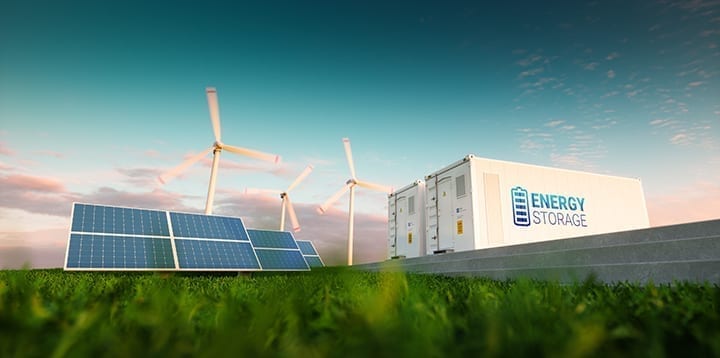Increasing Energy Security: Optimizing Today’s Energy Operations and Investing in Renewables for the Future
Credit to Author: Bryan Davies| Date: Wed, 14 Dec 2022 11:15:36 +0000

Countries’ timelines to becoming energy secure and reaching net-zero targets have shortened. Major contributing factors include COVID-19’s impact on supply chains and the war in Ukraine. Alongside this are external influences such as COP27, or the landmark U.S. Climate Bill, which will direct almost $370 billion toward rapidly scaling renewable energy production and reducing emissions. Already, intergovernmental organizations such as the International Energy Agency are seeking to help governments along this sustainability journey, establishing shared goals to promote the effective operation of markets and encourage dialogue between members. But change doesn’t happen overnight. The next decade will be a transition period that will require governments and companies to improve their energy security posture by making current energy operations more efficient and sustainable, as well as diversifying their portfolio by investing in domestic renewables.
Research—both academic, governmental, and by private companies—is what decisions are based on to drive strategies forward. The good news is that the volume of research is increasing. The number of publications related to net-zero energy and renewables grew faster than all other research at the world level between 2001 and 2020, to a total of 1.6 million papers. This means there’s more insights available for scientists and engineers to ensure optimal outcomes of energy projects. But to harness this data, the energy transition will also have to be accompanied by industry-wide digital transformation.
Optimize Current Operations and Boost Sustainability
Global energy requirements are rising as the world population grows and nations further industrialize. While renewable energy develops, current energy supplies will need to be maintained to meet demand and provide more sustainable, secure power. Nations and companies must take steps to make sure current operations are as sustainable, efficient, and have as low an environmental impact as possible. This includes using innovative materials and focusing on maintaining and protecting existing facilities. For example, replacing old components—such as pumps and compressors—across the supply chain can reduce carbon footprint and ensure fewer supply interruptions.
Maintaining infrastructure will be particularly important for less economically developed countries. Repairing individual components is less costly than waiting until the entire grid or facility needs replacing and reduces the risk of outages. Corrosion is a particular challenge in energy operations, costing the industry $60 billion annually. Companies and government agencies therefore need access to the latest data on corrosion-resistant materials and prevention strategies, so they can shift from a reactive stance on maintenance to a proactive one; retaining security of supply whilst also contributing toward a net-zero world.
Investing Intelligently in Renewables
Governments’ drive toward becoming energy secure is inextricably linked to the adoption of renewables. Diversifying energy sources with renewable power decreases reliance on other nations, as well as reducing emissions. However, the International Renewable Energy Agency (IRENA) emphasizes offshore renewables projects involve high capital costs and risk, so before making decisions about renewables sites, leaders need as much data as possible. For example, governments will first have to consider their prospects for which sources of energy are best suited to their geographical and social requirements. Islands with dense population, or nations with long coastlines, will benefit from offshore technologies, since they don’t displace people and establishing connectivity is easier. We’ve seen this with the UK’s London Array windfarm, or Rhode Island’s Block Island Wind Farm. In contrast, large nations in desert areas might opt for vast solar farms, as seen in Morocco.
The next step is screening and developing potential sites, ensuring they will be able to provide a steady, reliable supply of energy in tandem with optimising existing processes to mediate their environmental impact. Offshore sites, for example, are often in environmentally extreme locations with limited supply chains and connectivity. Therefore, project leaders will need data on factors such as geology, shallow seismic data, seabed mobility and obstructions, and meteorology data. It’s also important to be aware of existing infrastructure and transport viability, to ensure supply can be consistently retrieved.
Equipping Your Nation for the Transition
Adoption of renewables is a long-term plan, and as we have discussed, complex. Data is going to be critical to this transition, and researchers need to be able to access information to drive confident decision-making and optimal outcomes.
This starts with equipping scientists with domain-specific digital tools to help them get the most out of both legacy and new data. The growing volume of research is promising, but to unlock actionable insights we need to structure and harmonize it. Geoscientists working in exploration spend about 60% to 80% of their time searching for information they may already have—this can be significantly reduced through extensive digital transformation.
Once data are organized, critical insights can be unlocked to allow governments to model different scenarios and make confident predictions. There’s already been some success in the industry—for example, BHP’s “global legacy project,” which recovered 100 terabytes of information spread across 80 million files. These files were integrated with the company’s database to make data rapidly searchable alongside public information in a geoscience “portal.” Such digital transformation projects will be the only way to ensure no information is missed and researchers can quickly access the information needed to reduce the environmental impact of future and ongoing projects whilst also making them more efficient.
The Road Ahead Is Bumpy
The journey to energy security and net zero is a long one and governments must start investing in the right skills and technology sooner rather than later. The global economy is entering a new turbulent era, which will add even more pressure to decision-makers. Data-led planning and decision-making is critical to weathering the storm and forging a successful path toward diversified, affordable, secure, and net-zero energy supply.
—Bryan Davies is vice president of Engineering Solutions at Elsevier.
The post Increasing Energy Security: Optimizing Today’s Energy Operations and Investing in Renewables for the Future appeared first on POWER Magazine.